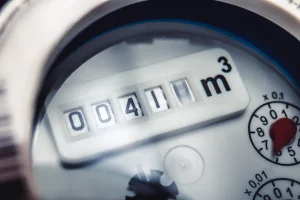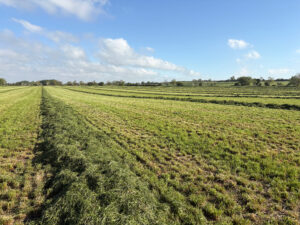Business water usage in the textile industry is highly intensive. Vast quantities of water are needed in the manufacturing process, which involves bleaching and dyeing, washing and rinsing, in addition to the water needed to produce the raw materials. People are becoming much more aware of the impact fashion is having on the environment, particularly fast fashion. ‘Slow fashion’ – i.e. clothing that’s made to last – is gaining in popularity as we become more aware of fashion’s impact on the environment.
There’s a particular problem with cotton
You might think that cotton is a good material to use in order to be eco-friendly, but the reality is that non-organic cotton is not good for the environment. A lot of water is needed to produce cotton crops – the global average is about 10,000 litres of water for every kilogram, which equates to around 2,700 litres for every shirt. And additional problems come from pollution in the form of pesticides, fertilisers and minerals, which affects biodiversity.
Irrigating cotton crops led to the Aral Sea drying up
Until 2014, cotton was the main crop in the area surrounding the Aral Sea in Uzbekistan. Without control measures in place, so much water was taken from the Aral that the sea almost completely dried up, poisoning the remaining water as well as the soil with high concentrations of salt and pollution.
Organic cotton is much more water efficient
More and more people are buying clothes made of organic cotton because of the lack of chemicals used in the growing process. However, it’s not widely appreciated that the production of organic cotton also uses around 91% less water than its non-organic counterpart. If you are looking for ways to reduce your brand’s overall use of water, switching to organic cotton will make immediate savings, at the same time as increasing your environmental credentials.
Water efficiency in the UK textile industry
Given the amount of water used in different stages of the manufacture of textiles, there are potentials for huge savings. The Environment Agency has produced detailed guidance on efficiencies the textile sector can make, from switching to chemicals that require less water, re-using water, and installing high-efficiency machinery, to sourcing raw materials that need less processing, and minimising emissions.
There are also many steps you can take to improve your water efficiency off the shop floor.
Leak detection
Leaking pipes are a major source of wasted water and could easily cost your business thousands, if not hundreds of thousands, of pounds. Leak detection is therefore an important part of becoming more water efficient. Castle Water helped Swindon Borough Council identified a major leak and was able to fix it before too much damage was done. Had that leak not been discovered, it would have cost the council around £250,000 a year for wasted water.
Grey water reuse
Many businesses are looking at the reuse of their grey water – i.e. water from washing machines, dishwashers, sinks, showers, and rainwater collection. This water may not be potable, but it can be diverted from going down the drain and used to flush toilets, water grounds, or wash vehicles. Using grey water will not only save your business buying the same quantity of clean water, but it will also save on wastewater costs too.
Business water efficiency strategies
We help our customers to reach their business water efficiency and sustainability goals through improved water efficiency strategies, resources and responsible consumption.
Download our free water efficiency guide, full of helpful tips and advice, that any business can follow to start saving water.
The quickest way to save money on your water bills is to switch business water supplier. As the UK’s largest independent water retailer, with more than 10,000 5-star Trustpilot reviews, we make it easy for you to manage your business water and wastewater services.



